Premium Only Content

Clear & Unambiguous Exclusion Effective
Trade Dress Infringement is Different From Trademark Infringement
In State Farm Fire And Casualty Company v. Jason Hines, Individually and doing business as Dedicated Business Systems International LLC; Dedicated Business Systems International, LLC; Tri-State Communication Services LLC, doing business as U.S. Voice and Data, LLC Jason Hines; Dedicated Business Systems International, LLC, No. 21-2354, United States Court of Appeals, Third Circuit (October 14, 2022) an insurer found no duty to defend because of a trade mark infringement exclusion.
FACTUAL BACKGROUND
An insurance coverage dispute arose concerning the scope of two commercial liability insurance policies was presented to the Third Circuit. The policies cover advertising injuries arising out of infringement upon another's trade dress, but they exclude injuries arising out of trademark infringement.
When the insured was sued for trademark infringement, the insurer initially agreed to defend the insured with reservations, but now the insurer wishes to withdraw from that representation. The insurer sued, seeking a declaratory judgment, and the District Court entered summary judgment in its favor: the policies' coverage of trade dress infringement claims did not extend to the suit for trademark infringement.
The Insurance Policies
The two commercial insurance policies at issue were issued by State Farm. In 2013, both policies used the same language in providing coverage for "personal and advertising injury." That coverage included the obligation to defend against suits arising out of infringement "upon another's copyright, trade dress or slogan in your 'advertisement.'" (emphasis added). But that advertising injury coverage excluded claims "[a]rising out of the infringement of copyright, patent, trademark, trade secret or other intellectual property rights." (emphasis added). Under both policies, that exclusion did not apply to infringement in an advertisement "of copyright, trade dress or slogan." (emphasis added).
Dedicated Business Systems International ('DBSI') purchased those policies from State Farm for itself and its officers when conducting DBSI business.
The Underlying Lawsuit
For a time, DBSI was an authorized reseller of Avaya communications technology. The authorized-reseller arrangement terminated in 2013, but DBSI and one of its officers allegedly continued to access Avaya software license portals afterwards - without Avaya's authorization. By doing so, they were allegedly able to distribute pirated licenses to customers for a handsome profit, all the while using Avaya's trade name and marks to falsely represent that the software was "valid and authorized by Avaya."
Believing that DBSI engaged in a "massive illegal software piracy operation," Avaya sued DBSI and its officer. Avaya's eight-count complaint included federal claims for trademark infringement and copyright infringement. In response, State Farm sent a letter to DBSI and the officer to inform them that it had appointed counsel to defend them in the Avaya lawsuit but that letter reserved State Farm's right to withdraw if it determined that the claims were outside of the policies' scope.
Consistent with that reservation of rights, State Farm initiated a lawsuit for a judgment declaring that it did not have to defend or indemnify DBSI and its officer in the Avaya lawsuit.
DISCUSSION
State Farm moved for summary judgment. That motion hinged on whether Avaya's complaint alleged a claim "arising from trademark or copyright infringement." The District Court entered summary judgment for State Farm.
Since neither policy specifically defines the two critical terms – “trade dress” infringement and “trademark” infringement, the court determined that as a matter of intellectual property law, the concepts of trademark and trade dress have much in common, with trade dress often treated as a subspecies of trademark. This case did not concern trademark and trade dress in the abstract; it concerned insurance policies that exclude claims for trademark infringement and cover claims for trade dress infringement.
First: Claims for trademark infringement and trade dress infringement have distinct elements. A claim for trademark infringement has three elements:
a valid and legally protectable mark;
owned by the plaintiff;
that, when used by the defendant to identify goods or services, is likely to create confusion concerning the origin of the goods or services.
Second: A claim for trade dress infringement has different elements. It requires an articulation of the specific features of the distinct trade dress sought to be protected followed by proof that an infringing design is nonfunctional; distinctive, either inherently or through secondary meaning; and likely to confuse consumers.
For State Farm to have a duty to defend the Avaya lawsuit against DBSI and its officer, Avaya's operative complaint must potentially state a claim for trade dress infringement. But it does not.
The operative complaint never mentions “trade dress.” Nor does it provide a basis for reasonably inferring such a claim. It does not contain the requisite description of the specific features of a trade dress that it seeks to protect.
Avaya's complaint lacked allegations necessary for a trade dress claim, and the District Court did not err in applying New Jersey law to conclude that State Farm did not have to defend DBSI and its officer in the Avaya litigation.
The judgment of the District Court was, therefore affirmed.
ZALMA OPINION
Infringing a trademark is the type of lawsuit that is often contentious and expensive to defend. Insurers, like State Farm, prefer to avoid such actions and exclude defense or indemnity for trademark infringement. On the other hand, trade dress infringement, putting out a product with a label that looks almost exactly like another's - a Rolex watch is not a Bolex that looks like, but is not the same; a Mont Blanc pen is not the same as a Mont Blank pen; nor is Cheerios the same as Cheerioms. The trade dress will be covered while the trade marks of Rolex Mont Blanc nor Cheerios will not.
(c) 2022 Barry Zalma & ClaimSchool, Inc.
Barry Zalma, Esq., CFE, now limits his practice to service as an insurance consultant specializing in insurance coverage, insurance claims handling, insurance bad faith and insurance fraud almost equally for insurers and policyholders. He practiced law in California for more than 44 years as an insurance coverage and claims handling lawyer and more than 54 years in the insurance business. He is available at http://www.zalma.com and [email protected] and receive videos limited to subscribers of Excellence in Claims Handling at locals.com https://zalmaoninsurance.locals.com/subscribe.Subscribe to Excellence in Claims Handling at https://barryzalma.substack.com/welcome.
Now available Barry Zalma’s newest book, The Tort of Bad Faith, available here. The new book is available as a Kindle book, a paperback or as a hard cover.
Write to Mr. Zalma at [email protected]; http://www.zalma.com; http://zalma.com/blog; daily articles are published at https://zalma.substack.com. Go to the podcast Zalma On Insurance at https://anchor.fm/barry-zalma; Follow Mr. Zalma on Twitter at https://twitter.com/bzalma; Go to Barry Zalma videos at Rumble.com at https://rumble.com/c/c-262921; Go to Barry Zalma on YouTube- https://www.youtube.com/channel/UCysiZklEtxZsSF9DfC0Expg; Go to the Insurance Claims Library – https://zalma.com/blog/insurance-claims-library
-
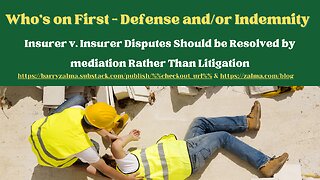 10:17
10:17
Barry Zalma, Inc. on Insurance Law
1 year agoWho's on First - Defense and/or Indemnity
195 -

vivafrei
1 hour agoComey Doubles Down, Prosecution Doubles Up! Election Day Madness! Boasberg Impeachment & MORE!
7.32K2 -
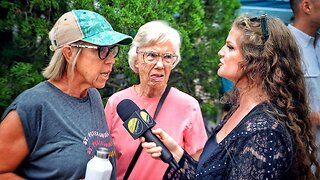 26:19
26:19
Liberty Hangout
4 days agoAnti-Trumpers Make Up Bizarre Theories
1.79K18 -
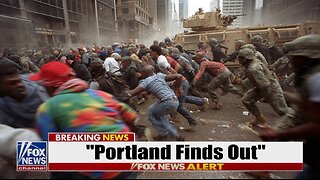 13:56
13:56
Cash Jordan
2 hours ago"OPEN BORDERS" Mob BATTERS Portland Jail… 'COMBAT' Marines DEFY Judge, BREAK BONES
884 -
 1:44:25
1:44:25
Redacted News
2 hours agoElection Day Disaster for Trump? Europe preps for WAR against Russia, Israel's PR failure | Redacted
71.5K60 -
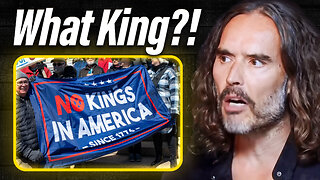 16:44
16:44
Russell Brand
2 hours agoAmerica’s Hidden Royalty
14.9K18 -
 LIVE
LIVE
StoneMountain64
4 hours agoBattlefield REDSEC leveling guns for attachments
296 watching -
 UPCOMING
UPCOMING
Wayne Allyn Root | WAR Zone
7 hours agoWatch LIVE: The War Zone Podcast with Wayne Allyn Root
26 -
 33:39
33:39
LibertyRoundTable
3 hours agoWarhawk Down: Dick Cheney’s Legacy & the Rise of Citizen Journalism | LRT Radio 11/4/25”
12 -
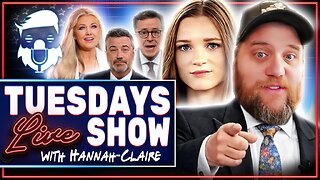 2:05:29
2:05:29
The Quartering
4 hours agoEscape From New York, Harvard Bombers Caught, Trump DEFIES Court On SNAP, Bomb Threat On Plane!
153K87